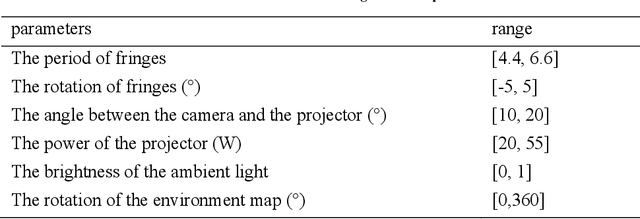Single-shot fringe projection profilometry based on Deep Learning and Computer Graphics
Paper and Code
Jan 04, 2021



Multiple works have applied deep learning to fringe projection profilometry (FPP) in recent years. However, to obtain a large amount of data from actual systems for training is still a tricky problem, and moreover, the network design and optimization still worth exploring. In this paper, we introduce computer graphics to build virtual FPP systems in order to generate the desired datasets conveniently and simply. The way of constructing a virtual FPP system is described in detail firstly, and then some key factors to set the virtual FPP system much close to the reality are analyzed. With the aim of accurately estimating the depth image from only one fringe image, we also design a new loss function to enhance the quality of the overall and detailed information restored. And two representative networks, U-Net and pix2pix, are compared in multiple aspects. The real experiments prove the good accuracy and generalization of the network trained by the data from our virtual systems and the designed loss, implying the potential of our method for applications.
 Add to Chrome
Add to Chrome Add to Firefox
Add to Firefox Add to Edge
Add to Edge